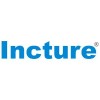Filter interviews by
Aditya Infotech Interview Questions and Answers
15 Interview questions
LAN and WAN are types of networks that differ in size, scope, and purpose, serving local and wide-area connectivity needs.
LAN (Local Area Network) connects devices in a limited area, like a home or office.
WAN (Wide Area Network) connects devices over large distances, such as cities or countries.
Example of LAN: A home Wi-Fi network connecting computers and smartphones.
Example of WAN: The internet, which connects mi...
An IP address is a unique identifier for a device on a network, enabling communication over the internet.
IP stands for Internet Protocol, which is a set of rules for sending data across networks.
There are two main types of IP addresses: IPv4 (e.g., 192.168.1.1) and IPv6 (e.g., 2001:0db8:85a3:0000:0000:8a2e:0370:7334).
IP addresses can be static (permanently assigned) or dynamic (assigned by a DHCP server).
They are ...
The Internet is a global network of interconnected computers and servers that allows for communication, information sharing, and access to resources.
Global network of interconnected computers
Allows for communication, information sharing, and resource access
Uses protocols like HTTP, FTP, and TCP/IP
Examples: websites, email, online gaming
A network is a collection of computers, servers, mainframes, network devices, and other devices connected to one another to share data and resources.
Networks can be classified based on their size (LAN, WAN, MAN)
Networks can be wired (Ethernet, fiber optic) or wireless (Wi-Fi, Bluetooth)
Networks use protocols like TCP/IP to facilitate communication between devices
Examples of networks include the internet, intranets...
Yes, IP address can be configured manually by accessing network settings and entering the desired IP address.
Access network settings on the device
Navigate to the TCP/IP settings
Enter the desired IP address, subnet mask, gateway, and DNS server manually
Class C IP address range is from 192.0.0.0 to 223.255.255.255.
Class C IP addresses start with 192.x.x.x to 223.x.x.x
The subnet mask for Class C is 255.255.255.0
Example: 192.168.1.1, 203.45.67.89
I have had a successful career as a Hardware Engineer, specializing in designing and developing computer hardware components.
I have a Bachelor's degree in Electrical Engineering.
I have worked for 5 years at ABC Electronics, where I designed and tested circuit boards for computer systems.
I have experience in FPGA programming and have successfully implemented complex algorithms on hardware.
I have collaborated with c...
TCP and UDP are protocols used for data transmission over the internet.
TCP is a connection-oriented protocol while UDP is connectionless.
TCP provides reliable data transmission while UDP does not guarantee reliability.
TCP is slower than UDP due to its overhead while UDP is faster.
TCP is used for applications that require error-free and ordered data transmission like email, file transfer, etc. while UDP is used for...
TCP is a connection-oriented protocol while UDP is connectionless. TCP provides reliable data transfer while UDP does not.
TCP establishes a connection before data transfer while UDP does not.
TCP provides error checking and retransmission of lost packets while UDP does not.
TCP is used for applications that require reliable data transfer such as email, file transfer, etc. while UDP is used for applications that requ...
DHCP stands for Dynamic Host Configuration Protocol. It is a network protocol that automatically assigns IP addresses to devices on a network.
DHCP is used to manage and allocate IP addresses in a network.
It allows devices to obtain IP addresses dynamically instead of manually configuring them.
DHCP also provides additional network configuration information like subnet mask, default gateway, and DNS server addresses...
Aditya Infotech Interview Experiences
8 interviews found
Assistant General Manager Accounts and Finance Interview Questions & Answers
posted on 9 Jan 2025
I applied via Indeed and was interviewed in Dec 2024. There was 1 interview round.
(3 Questions)
- Q1. Tell me something about yourself
- Ans.
I am a dedicated and experienced finance professional with a strong background in accounts management and financial analysis.
Over 8 years of experience in finance and accounting roles
Skilled in budgeting, forecasting, and financial reporting
Managed a team of accountants to ensure accurate and timely financial information
Implemented cost-saving strategies that resulted in a 15% reduction in expenses
Strong analytical ski...
- Q2. What kind of work did you do in your previous Org & General Quaries
- Ans.
In my previous organization, I was responsible for overseeing all financial activities, preparing financial statements, managing budgets, and providing financial analysis.
Prepared financial statements on a monthly basis
Managed budgets and ensured compliance with financial regulations
Conducted financial analysis to identify areas for improvement
Collaborated with other departments to streamline financial processes
- Q3. Process & Automation
(5 Questions)
- Q1. What is DNS? If there is No concept of DNS then what are the issue arrise?
- Ans.
DNS stands for Domain Name System. It translates domain names to IP addresses. Without DNS, users would have to remember IP addresses to access websites.
DNS is like a phone book for the internet, translating domain names (like google.com) to IP addresses (like 172.217.3.206).
Without DNS, users would have to remember and type in IP addresses to access websites, which is not user-friendly.
Issues that can arise without DN...
- Q2. Is IP address Configure manually ? If yes then how ?
- Ans.
Yes, IP address can be configured manually by accessing network settings and entering the desired IP address.
Access network settings on the device
Navigate to the TCP/IP settings
Enter the desired IP address, subnet mask, gateway, and DNS server manually
- Q3. What is IP address range of class C?
- Ans.
Class C IP address range is from 192.0.0.0 to 223.255.255.255.
Class C IP addresses start with 192.x.x.x to 223.x.x.x
The subnet mask for Class C is 255.255.255.0
Example: 192.168.1.1, 203.45.67.89
- Q4. What is Internet?
- Ans.
The Internet is a global network of interconnected computers and servers that allows for communication, information sharing, and access to resources.
Global network of interconnected computers
Allows for communication, information sharing, and resource access
Uses protocols like HTTP, FTP, and TCP/IP
Examples: websites, email, online gaming
- Q5. What is Network?
- Ans.
A network is a collection of computers, servers, mainframes, network devices, and other devices connected to one another to share data and resources.
Networks can be classified based on their size (LAN, WAN, MAN)
Networks can be wired (Ethernet, fiber optic) or wireless (Wi-Fi, Bluetooth)
Networks use protocols like TCP/IP to facilitate communication between devices
Examples of networks include the internet, intranets, and...
Skills evaluated in this interview
I appeared for an interview in Jan 2025.
(1 Question)
- Q1. Introdue yourself
Interview Preparation Tips
I appeared for an interview before Apr 2024, where I was asked the following questions.
- Q1. What is the Network like LAN WAN
- Ans.
LAN and WAN are types of networks that differ in size, scope, and purpose, serving local and wide-area connectivity needs.
LAN (Local Area Network) connects devices in a limited area, like a home or office.
WAN (Wide Area Network) connects devices over large distances, such as cities or countries.
Example of LAN: A home Wi-Fi network connecting computers and smartphones.
Example of WAN: The internet, which connects million...
- Q2. What is the routing protocols, RIP,OSPF,EIGRP,BGP
- Ans.
Routing protocols manage data packet forwarding in networks, ensuring efficient communication between devices.
RIP (Routing Information Protocol): Distance-vector protocol, uses hop count as a metric, max 15 hops.
OSPF (Open Shortest Path First): Link-state protocol, uses Dijkstra's algorithm, supports large networks with hierarchical design.
EIGRP (Enhanced Interior Gateway Routing Protocol): Cisco proprietary, combines ...
- Q3. What is the IP address
- Ans.
An IP address is a unique identifier for a device on a network, enabling communication over the internet.
IP stands for Internet Protocol, which is a set of rules for sending data across networks.
There are two main types of IP addresses: IPv4 (e.g., 192.168.1.1) and IPv6 (e.g., 2001:0db8:85a3:0000:0000:8a2e:0370:7334).
IP addresses can be static (permanently assigned) or dynamic (assigned by a DHCP server).
They are essen...
- Q4. What is the switch, why should be use switch
- Ans.
A switch is a networking device that connects devices on a local area network, enabling communication and data transfer.
Switches operate at the data link layer (Layer 2) of the OSI model, managing data traffic efficiently.
They use MAC addresses to forward data only to the intended recipient, reducing unnecessary traffic.
Example: In a small office, a switch connects computers, printers, and servers, allowing them to com...
- Q5. Why do you want to join us
- Ans.
I admire your company's commitment to innovation and customer satisfaction, and I believe my skills align perfectly with your mission.
Your company is known for its cutting-edge technology, and I am excited about the opportunity to work with such innovative products.
I appreciate your focus on customer support excellence, and I am passionate about helping users resolve their technical issues efficiently.
I have researched...
Interview Preparation Tips
I applied via Naukri.com and was interviewed before Jun 2023. There was 1 interview round.
(1 Question)
- Q1. Focus on job description only
Interview Preparation Tips
(2 Questions)
- Q1. Tell me about your carrier?
- Ans.
I have had a successful career as a Hardware Engineer, specializing in designing and developing computer hardware components.
I have a Bachelor's degree in Electrical Engineering.
I have worked for 5 years at ABC Electronics, where I designed and tested circuit boards for computer systems.
I have experience in FPGA programming and have successfully implemented complex algorithms on hardware.
I have collaborated with cross-...
- Q2. Tell me about your qualifications?
- Ans.
I have a Bachelor's degree in Electrical Engineering and 5 years of experience in designing and testing hardware components.
Bachelor's degree in Electrical Engineering
5 years of experience in designing and testing hardware components
Interview Preparation Tips
I applied via Walk-in and was interviewed before Sep 2021. There were 3 interview rounds.

(3 Questions)
- Q1. What your views about our honourable prime minister.
- Q2. Why should we hire you
- Q3. What is your salary expectation
(2 Questions)
- Q1. About networking IP address
- Q2. Osi model, connections cables
Interview Preparation Tips
I applied via Walk-in and was interviewed before Oct 2019. There were 3 interview rounds.
Interview Questionnaire
6 Questions
- Q1. What is dhcp
- Ans.
DHCP stands for Dynamic Host Configuration Protocol. It is a network protocol that automatically assigns IP addresses to devices on a network.
DHCP is used to manage and allocate IP addresses in a network.
It allows devices to obtain IP addresses dynamically instead of manually configuring them.
DHCP also provides additional network configuration information like subnet mask, default gateway, and DNS server addresses.
It u...
- Q2. What is dns
- Ans.
DNS stands for Domain Name System. It is a system that translates domain names into IP addresses.
DNS is like a phone book for the internet
It helps computers find the IP address of a website
DNS servers store information about domain names and their corresponding IP addresses
DNS can also be used for other purposes like email routing and network diagnostics
- Q3. What is tcp
- Ans.
TCP (Transmission Control Protocol) is a reliable, connection-oriented protocol used for transmitting data over networks.
TCP is one of the main protocols in the Internet Protocol Suite.
It provides reliable, ordered, and error-checked delivery of data packets.
TCP establishes a connection between two devices before data transmission.
It ensures data integrity by using acknowledgments and retransmissions.
TCP is widely used...
- Q4. Differences between tcp & udp
- Ans.
TCP is a connection-oriented protocol while UDP is connectionless. TCP provides reliable data transfer while UDP does not.
TCP establishes a connection before data transfer while UDP does not.
TCP provides error checking and retransmission of lost packets while UDP does not.
TCP is used for applications that require reliable data transfer such as email, file transfer, etc. while UDP is used for applications that require f...
- Q5. Osi model
- Q6. Explain the example of tcp and udp
- Ans.
TCP and UDP are protocols used for data transmission over the internet.
TCP is a connection-oriented protocol while UDP is connectionless.
TCP provides reliable data transmission while UDP does not guarantee reliability.
TCP is slower than UDP due to its overhead while UDP is faster.
TCP is used for applications that require error-free and ordered data transmission like email, file transfer, etc. while UDP is used for appl...
Interview Preparation Tips
Skills evaluated in this interview
Top trending discussions






Interview questions from similar companies

Technical Support Engineer Interview Questions & Answers
MindGate Solutionsposted on 23 Dec 2024
(1 Question)
- Q1. Tell me about your self
- Ans.
I am a dedicated Technical Support Engineer with a passion for problem-solving and a strong background in IT support and customer service.
Over 5 years of experience in technical support roles, assisting users with software and hardware issues.
Proficient in troubleshooting Windows and Mac operating systems, ensuring quick resolution of technical problems.
Skilled in using ticketing systems like Jira and Zendesk to manage...

Technical Support Engineer Interview Questions & Answers
Incture Technologiesposted on 20 Sep 2023
I applied via Company Website and was interviewed in Aug 2023. There were 3 interview rounds.

Prepare for basic aptitude and verbal abilities questions.
(1 Question)
- Q1. Self intro, explain about your UG project and salary expected
Aditya Infotech Interview FAQs
Tell us how to improve this page.
Aditya Infotech Interviews By Designations
- Aditya Infotech Technical Support Engineer Interview Questions
- Aditya Infotech Accounts & Finance Manager Interview Questions
- Aditya Infotech Engineer Interview Questions
- Aditya Infotech Network Administrator Interview Questions
- Aditya Infotech Hardware Engineer Interview Questions
- Aditya Infotech Assistant General Manager Accounts and Finance Interview Questions
Interview Questions for Popular Designations
Overall Interview Experience Rating
based on 12 interview experiences
Difficulty level
Duration
Interview Questions from Similar Companies
Aditya Infotech Reviews and Ratings
based on 219 reviews
Rating in categories
|
Technical Support Engineer
50
salaries
| ₹2 L/yr - ₹4.5 L/yr |
|
Engineer
38
salaries
| ₹2.7 L/yr - ₹4.8 L/yr |
|
Assistant Manager
29
salaries
| ₹4.3 L/yr - ₹10.1 L/yr |
|
Senior Executive
25
salaries
| ₹3.2 L/yr - ₹7 L/yr |
|
Manager
18
salaries
| ₹7.9 L/yr - ₹12 L/yr |

Tekwissen

Softenger

XcelServ Solutions

Capital Numbers Infotech
- Home >
- Interviews >
- Aditya Infotech Interview Questions














